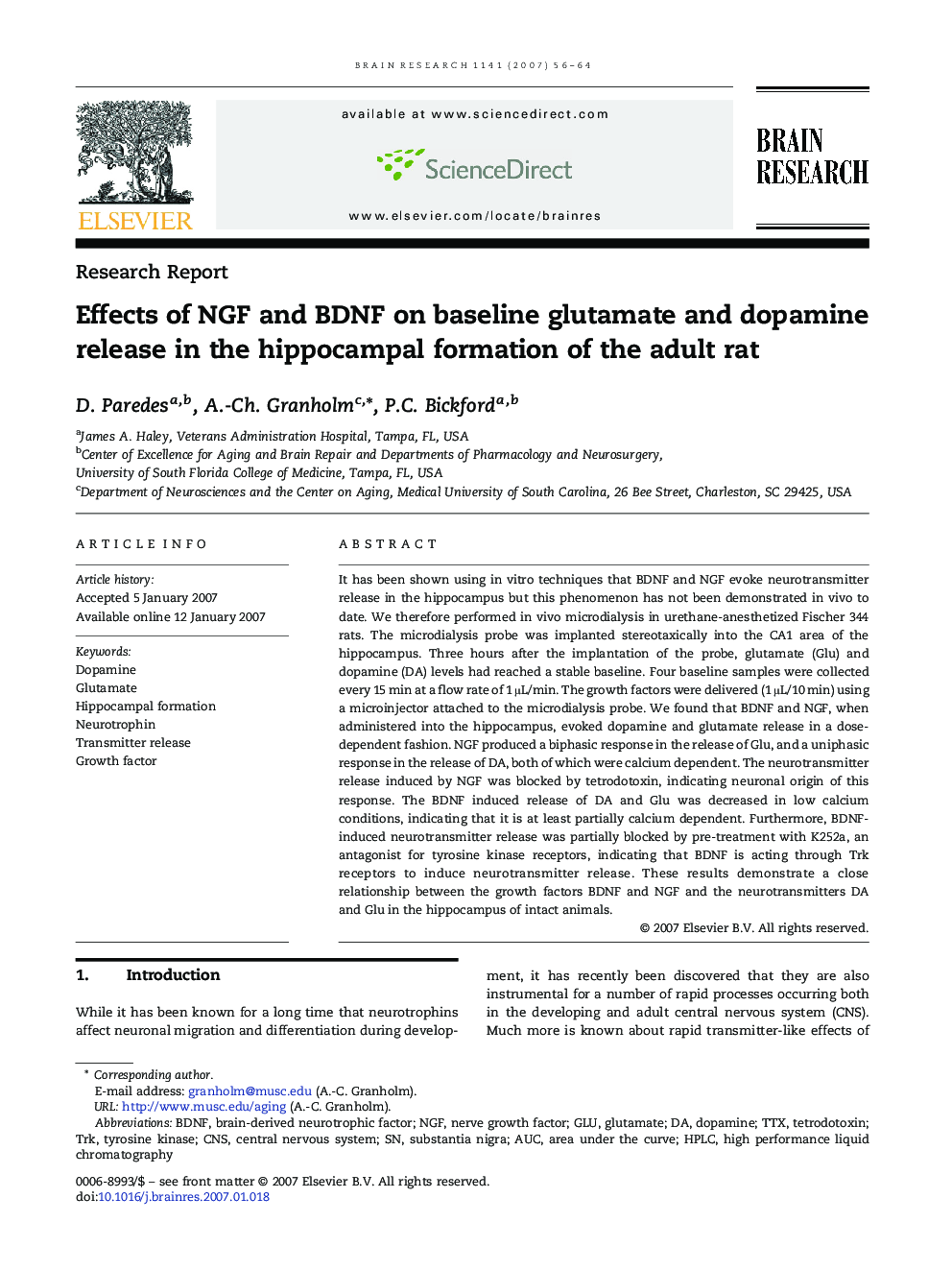| Article ID | Journal | Published Year | Pages | File Type |
|---|---|---|---|---|
| 4331389 | Brain Research | 2007 | 9 Pages |
It has been shown using in vitro techniques that BDNF and NGF evoke neurotransmitter release in the hippocampus but this phenomenon has not been demonstrated in vivo to date. We therefore performed in vivo microdialysis in urethane-anesthetized Fischer 344 rats. The microdialysis probe was implanted stereotaxically into the CA1 area of the hippocampus. Three hours after the implantation of the probe, glutamate (Glu) and dopamine (DA) levels had reached a stable baseline. Four baseline samples were collected every 15 min at a flow rate of 1 μL/min. The growth factors were delivered (1 μL/10 min) using a microinjector attached to the microdialysis probe. We found that BDNF and NGF, when administered into the hippocampus, evoked dopamine and glutamate release in a dose-dependent fashion. NGF produced a biphasic response in the release of Glu, and a uniphasic response in the release of DA, both of which were calcium dependent. The neurotransmitter release induced by NGF was blocked by tetrodotoxin, indicating neuronal origin of this response. The BDNF induced release of DA and Glu was decreased in low calcium conditions, indicating that it is at least partially calcium dependent. Furthermore, BDNF-induced neurotransmitter release was partially blocked by pre-treatment with K252a, an antagonist for tyrosine kinase receptors, indicating that BDNF is acting through Trk receptors to induce neurotransmitter release. These results demonstrate a close relationship between the growth factors BDNF and NGF and the neurotransmitters DA and Glu in the hippocampus of intact animals.
